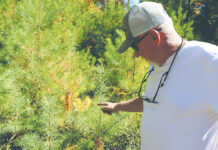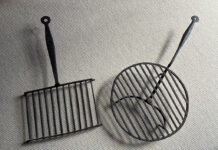Following a recent Extension program planning meeting, Dianne Shoemaker, district extension dairy specialist, suggested I check with Iowa State University Extension’s Odor and Nutrient Management program to find out more about odor reduction strategies and manure nutrient utilization research.
Gary Graham, north district extension specialist in natural resources, and I had looked at Iowa State’s manure nutrient utilization research in 2001 as we explored available information in preparation for manure utilization research on no-till corn in Columbiana County.
You can access the Iowa State program information at the Iowa State Extension Web site at: www.extension.iastate.edu/.
Research proves it. According to the Iowa State researchers, studies in Europe and Iowa using different evaluation techniques, prove that soil injection controls odor emissions from manure during and after land application.
In Europe, researchers measured the amount of dilution air necessary to reduce the odor of manure to the point where it was just detectable.
The higher the dilution threshold value, the stronger the initial odor.
European dilution threshold data for different land application methods.
Real people, real smells. In Iowa, people attending statewide odor control demonstration field days evaluated odors on a four-step scale ranging from no odor (0) to strong (3). (See accompanying graph).
Attendees evaluated soil injection effects on odor emission at 5 field days on a scale of: 0 = no odor, 1 = slight odor, 2 = noticeable odor, and 3 = strong odor.
Costs and benefits. So, we know injecting swine manure reduces the odor resulting from land application. However, injecting manure into the soil increases the cost of hauling.
According to a survey of custom applicators in Iowa, using a slurry tanker to inject manure adds about .3 cents per gallon to the cost of spreading manure, compared to broadcasting the manure.
Drag hose systems are usually less expensive (depending on the amount of manure spread) and result in more rapid spreading than tankers when land is close to the manure storage.
Another benefit of drag hose systems is reduced soil compaction.
Nutrient needs. We also know that swine manure can supply all the nutrient needs of high-yielding corn crops under good growing conditions (not severe drought or excessive rain fall).
According to Iowa research, it is feasible to provide total corn nitrogen needs from liquid swine manure.
These manure amounts also provide an excess of phosphorus and potassium for the corn crop.
Data include a combination of spring and fall applications. All sites were replicated strip trials.
All but three of the field sites were corn following soybeans. The other three were corn after corn. All yield differences are significant (P<= 0.10).
Unanswered questions. However, several important questions still appear unanswered:
1. Although manure injection is known to reduce the odors resulting from spreading, is there any nutrient (nitrogen) retention advantage resulting in increased crop yields which would offset the cost of injecting?
2. Can manure injection systems be developed which will give no-till farmers the benefits of manure injection while preserving the integrity (specifically, the residue retention and carbon sequestration benefits) of no-till?
3. What can be done about the well-documented reports of swine manure from aerobic lagoons (both surface-applied and injected) flowing directly into tile drains through worm burrows on no-till fields?
Although we think the latter problem does not occur with higher solids content liquid dairy manure, further research is needed.
Ongoing on-farm research in Columbiana County is addressing the first two questions.
Soil nitrogen and plant tissue test results for 2003 are promising. Corn will be harvested soon. Watch for research results.
Get 4 Weeks of Farm and Dairy Home Delivered











